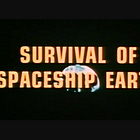The Skeleton of Science
The Society for the Advancement of General Systems Theory was founded in 1956, and the opening paper in their very first yearbook was penned by none other but Kenneth Boulding; General Systems Theory - The Skeleton of Science1, who incidentally also happened to be that society’s first president2.
And it’s a complex, but important topic, because not only does it explicitly tie in with One Health, Sustainable Development, the Circular Economy, and the Ecosystem Approach, but it also directly relates to Information Theory, Resilience Theory, and Cybernetics.
One might even say it’s a Holistic Approach.
First off - this isn’t a trivial subject. I cover this because it really is important. Very much so, in fact. In order to fully comprehend what’s taking place around you, the comprehension of this topic is a necessary evil, I fear. So please do stick with it - and please ask questions in the comments if confused.
And let me get a few links out of the way now. I first covered General Systems Theory a few months back -
And it really is an important topic, especially as just about everyone that matters is a fully signed up believer, though typically through its somewhat more palatable marketing term, Spaceship Earth, incidentally also introduced by the very same Kenneth Boulding via his enormeously influential 1966 paper, The Economics of the Coming Spaceship Earth3. Yes, the same Boulding who penned our current paper. No, that’s certainly no coincidence.
Further, the Club of Rome’s very own Donella Meadows’ ‘Leverage Points’ paper is contextual here -
Finally, as for the ‘Ecosystem Approach’, the ‘Circular Economy’, ‘Planetary Health’ and ‘One Health’; these are all concepts, fitting under the umbrella of General Systems Theory, along with the Sustainable Development Goals in general -











